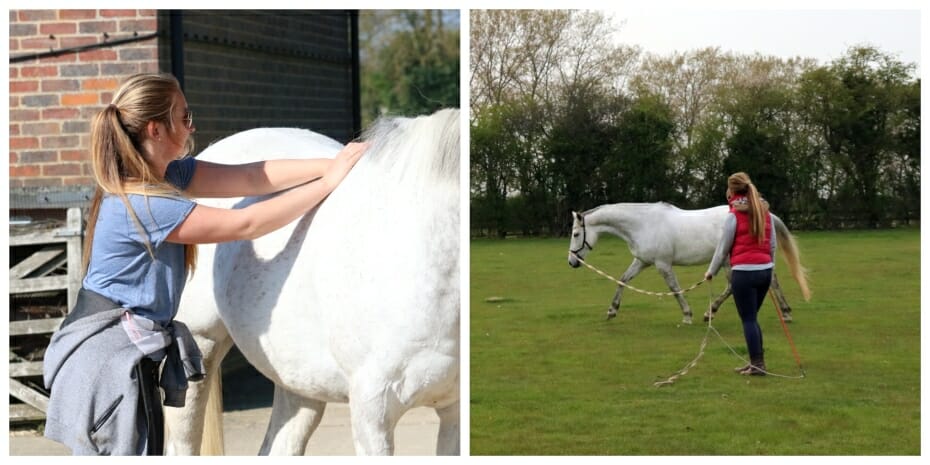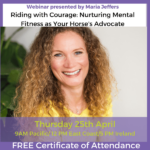By Yasmin Stuart
UNDERSTANDING FASCIA
Every tissue in your body and your horse’s body is coated in a layer of fascia – a huge, interconnecting web of collagen fibres that facilitate stability – by wrapping the tissues together – and also movement – by allowing skin to glide over the underlying muscle; muscle to glide over other muscles and bone; and internal organs to slide around in your abdominal cavity whilst you respire. It contains proprioceptors and mechanoreceptors that feed back to the central nervous system about where the body is ‘in space’ and the load at which any particular muscle is under at any particular moment in time.
When the musculoskeletal system is compromised i.e the horse has some kind of tension/restriction within their body, it’s the web of fascia that has stopped gliding over itself. But the nature of the tissue means that if there is a restriction in one part of the body, it will have a knock-on effect everywhere else. It’s a little bit like pinching the fabric together on a scarf, you can see the creases all the way along the fabric, not just at the site of the pinch.
BODYWORK AND TRAINING
Whilst it is still possible to train and improve a horse with restrictions, their movement potential will be limited – and some movements may even be totally unattainable. Restrictions cause the horse to work in compensatory patterns, developing their musculature asymmetrically and potentially causing long-term damage by remodelling to their hard tissue structures. Bodywork is the process where we restore a horse’s body ‘back to factory settings’. By releasing the fascial system, allowing and facilitating the glide, we increase movement potential.
However, bodywork alone is not enough. By releasing their fascial system their mechanoreceptors and proprioceptors become confused. You can see this in effect when the horse walks after his treatment – in some instances they suffer a complete loss of coordination (proprioception). The impulses are not able to fire along the same pathways and the body needs to rewrite its map of where and how the tissues move. To do this, we must train the horse to work in vertical balance at the very least; with their weight suspended equally between both scapulae. This allows them to develop their musculature symmetrically by loading both forelimbs equally. It also optimises their movement potential, so they can work through every joint’s full range of motion.
If no straightness training commences, the old fascial restrictions will reappear. At best the horse will resume old compensatory patterns, at worst the restrictions will manifest, causing an escalating physiological issue resulting in irreversible damage to tissues.
Yasmin Stuart is a UK-based Equine Physiotherapist who specialises in rehabilitation. She has been passionate about horses all her life. Her interest in equine biomechanics was developed from the age of 18 when she found herself working for and training with a dressage trainer. It was here that she was introduced to optimal biomechanical function and training under saddle- beginning with one of Gerd Heuschmann’s renowned seminars at the TTT in Guildford. Whilst working on the yard, Yasmin began suffering with lower back pain attributed to poor core stability. This sent her on a journey of self discovery and with the help of her Physiotherapist, she became stronger and pain free. But it made her wonder- how can we expect an animal to perform at their very best when their musculature is compromised? It was this that catalysed her decision to enrol in an Equine Physiotherapy diploma at the Berkshire College of Agriculture. Qualifying as an Equine Physiotherapist in 2016. Her practice came full circle when she noticed that most horses were compromised because of their lack of suitable training. It was here she found there was a growing need for a Physiotherapist who could facilitate the development of a healthy equine athlete with a combined approach to training and bodywork. With this in mind, Yasmin continues to explore many training and body work approaches with her own horses, including Masterson Method, Daniel Kamen techniques, fascia release, Dressage Naturally, and more recently, Karin Leibrannt’s 4Dimension Dressage and Murdoch Method. With the intention of looking to connect the dots between knowledge and experience in order to be able to provide the tools that empower her clients to optimise their horses’ wellbeing. Yasmin also lectures Equine Physiotherapy students at the Open College of Equine Studies near Bury St Edmunds. She feels strongly about educating the next generation of equine professionals that the way to a healthy equine athlete is more than just Physiotherapy and the importance of connecting with other professionals to create a team to target every aspect of horse welfare- training, behaviour, nutrition, hoof-care and management.’
If you liked this post, you might also be interested in the resources below:
https://www.equitopiacenter.com/shop/compassionate-training-for-todays-sport-horse-2/
https://www.equitopiacenter.com/shop/chiropractic-care/
For more resources, check out the Equitopia membership program – click here




